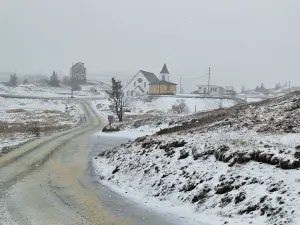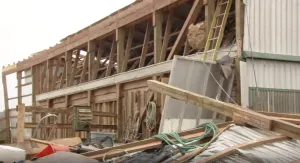
How the 2019 winter washed away California's drought
Every major reservoir in the state is above historic revels, and there are some that are completely full
Last week marked the first time since December 2011 that California has been free of drought conditions, breaking a 376-week streak.
Only some reservoirs in the far northern edge of the state, along the Oregon border and others down south near Mexico, are still experiencing abnormal dryness, but as of March 19th, there is no drought in sight for the state of California.
Despite the winter floods, landslides, traffic jams and power outages, California had an exceptional winter season in terms of precipitation. A train of Pacific Ocean storms, fed by a very active atmospheric river pattern, drenched much of the state during winter 2018/19, while dumping tremendous amounts of snow on the mountains all within the last three months.
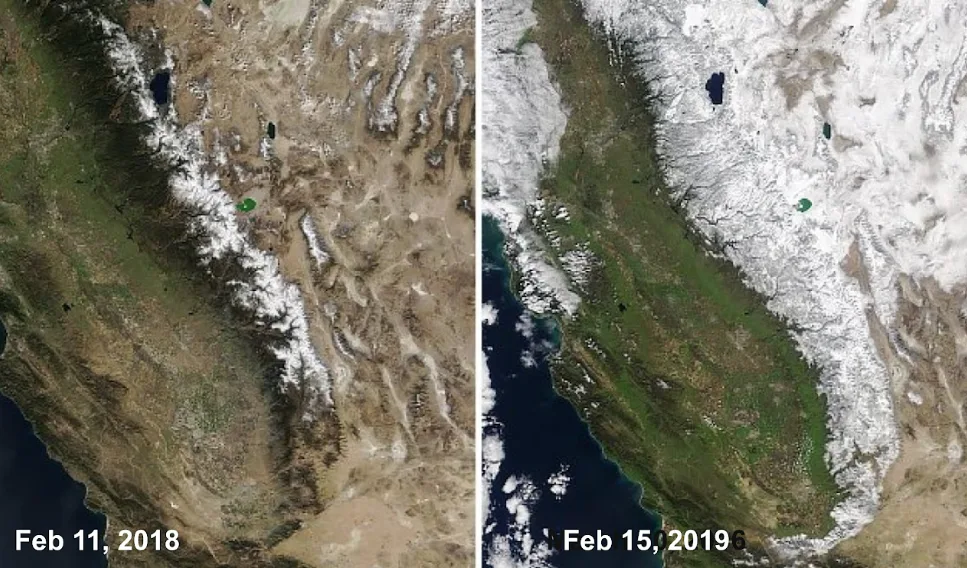
Aerial view of snow-capped Sierra Nevada mountains. Credit: NOAA
Just a year ago, the U.S. Drought Monitor Report showed the state experiencing up to 49 per cent of some type of drought. Most of central and southwest California were under severe drought conditions, with remnants of extreme drought still affecting several counties north of Los Angeles. Even snowpack, as seen in the image above, was considerably small compared to this years abundant cover.
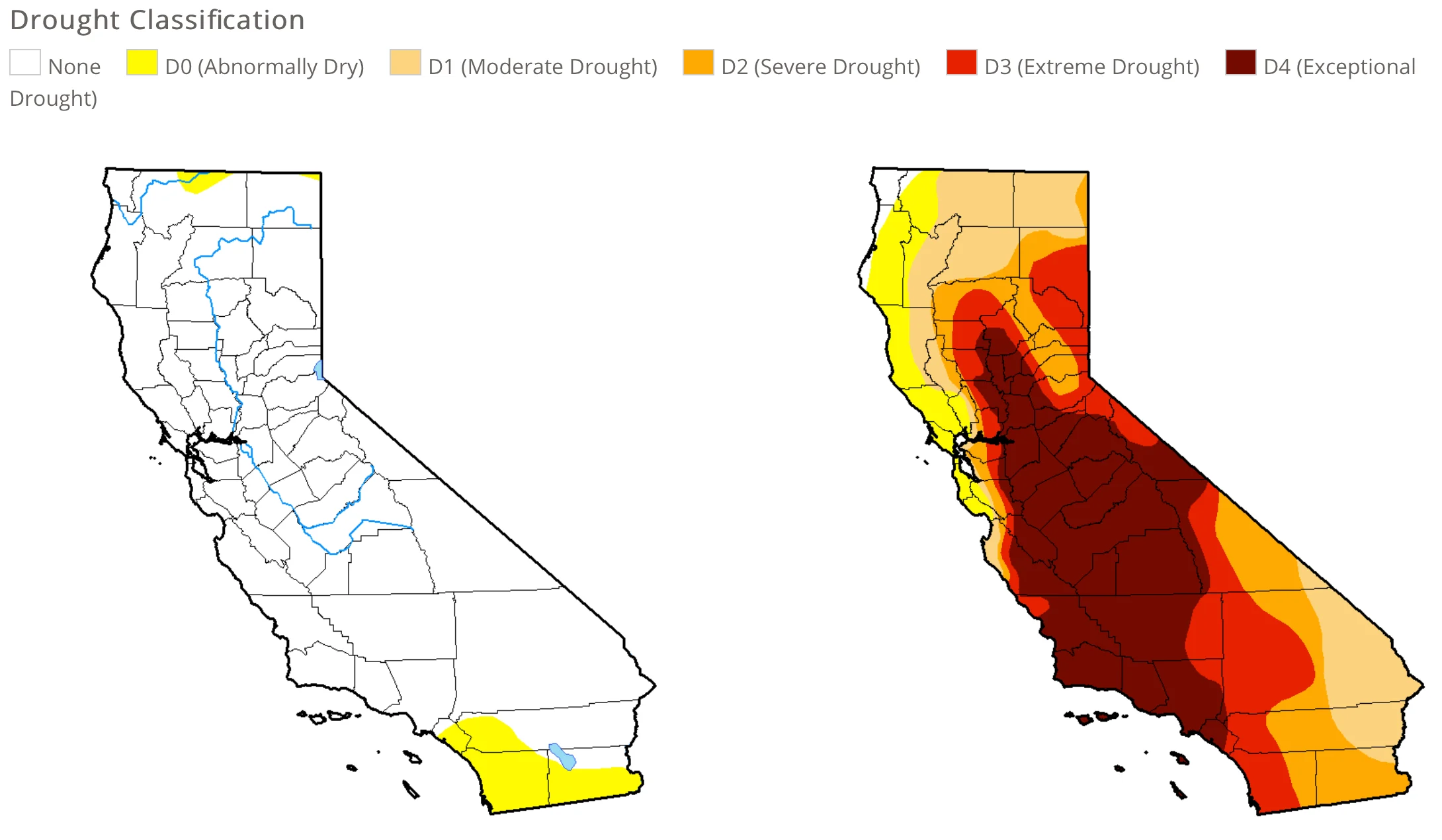
Drought conditions in 2019 (left) versus drought conditions in 2016 (right).
If we look back at what last week was like three years ago compared with today, the change is outstanding. Back then, close to 96 per cent of California suffered some form of droughty, and 60 per cent of the anomaly was in the extreme to exceptional drought category.

Drought conditions in 2019 (left) versus drought conditions in 2018 (right).
The core of California’s recent drought extended from 2012 to 2016, bringing widespread water shortages, devastating wildfires and major impacts to the state’s agriculture. Skiers had to travel hundreds of miles in search for decent snow conditions, and the dry Sierra Nevada mountains saw more than 1 million trees die. In urban areas, millions were affected by water restrictions as some cities where literally running out of water.
By spring of 2017 the drought had been reduced considerably thanks to a series of very active storms that caused major flooding in San Jose and fractured the spillway at Orville Dam. But if would not be long before the shadow of the drought would return, and during the dry winter of 2018, snow levels fell, once again, to record low values.
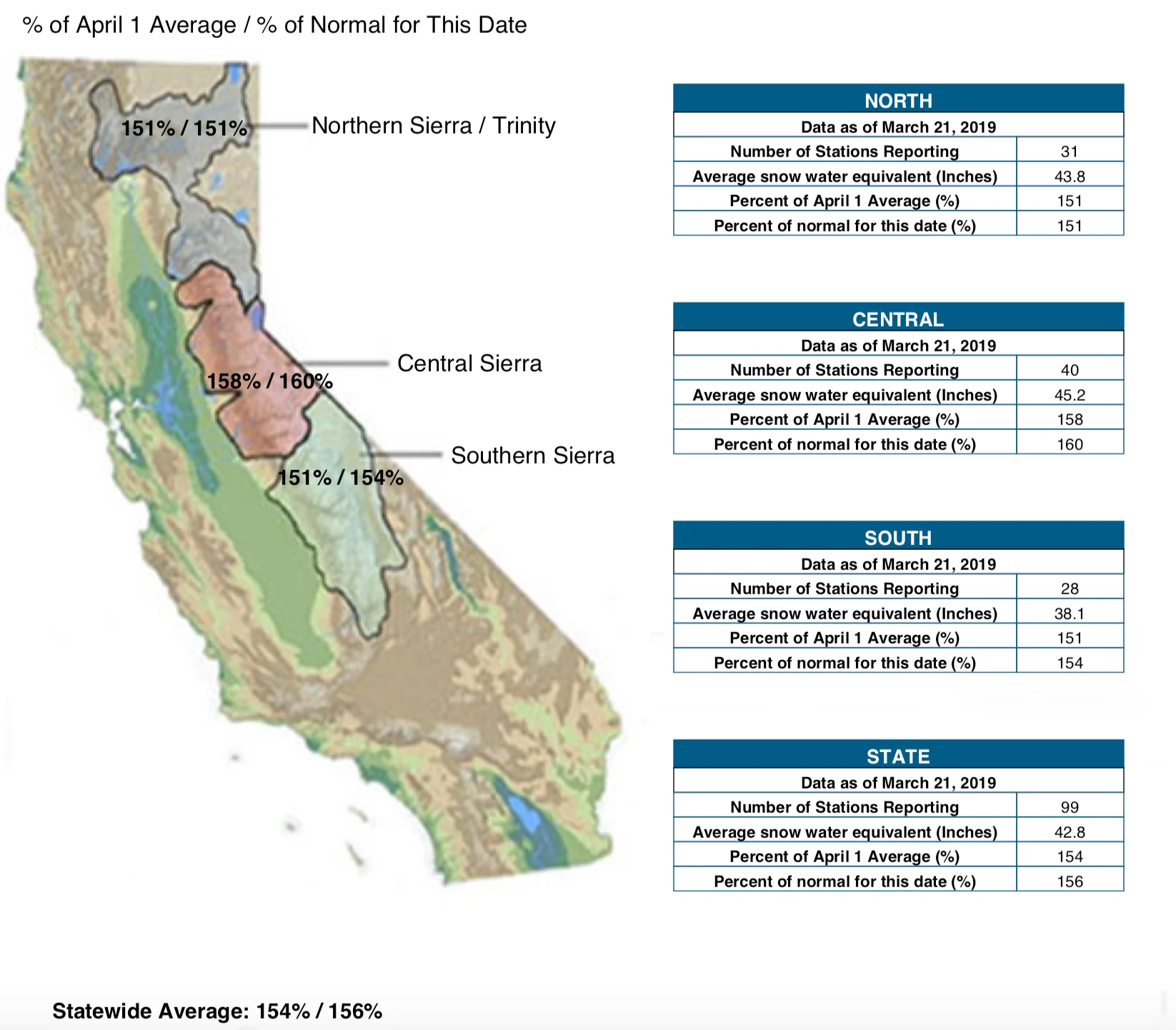
Pictured above: California snowpack.
This winter, the Sierra Nevada snowpack, which provides water for about a third of the state, is in some areas of the central portion of the range 160 per cent of the historical value for last week, up nearly 70 per cent from the beginning of the year's values. Every major reservoir in the state is above historic revels, and there are some that are completely full.
And the good news extends well below the surface. This year, groundwater water recharge is on the rise, especially given the nature of storms we've had through the season, which have been persistent in bringing steadier precipitation to the region.









